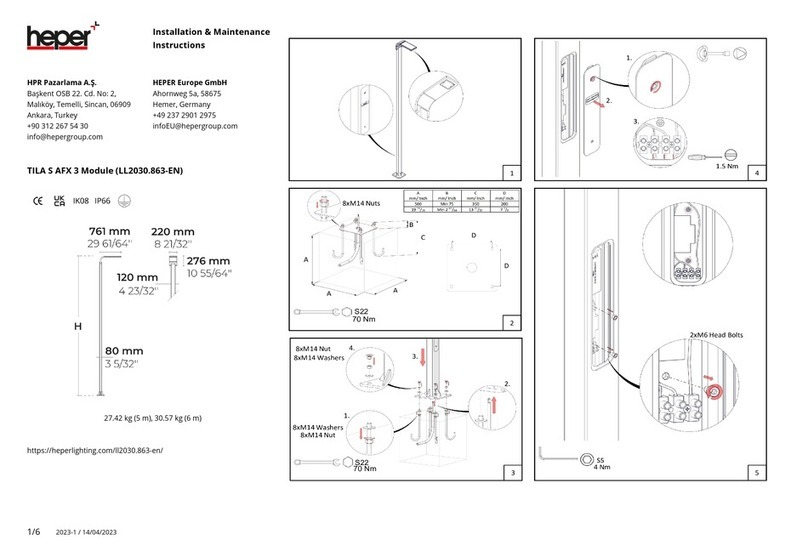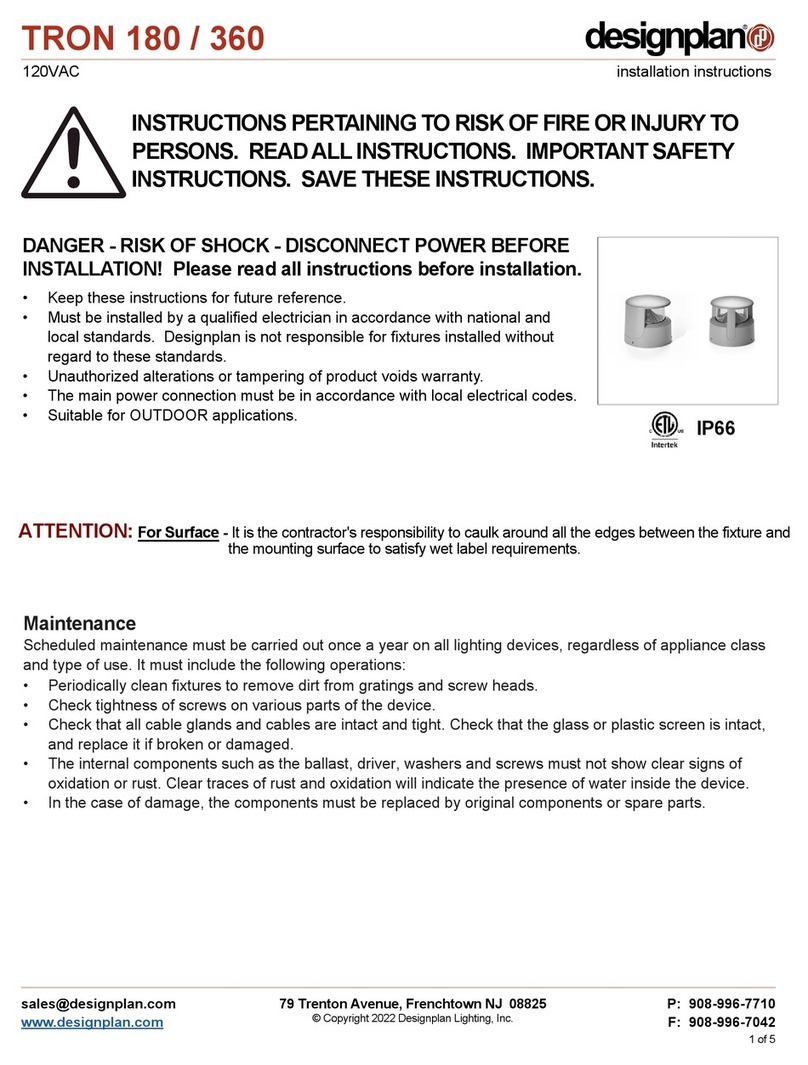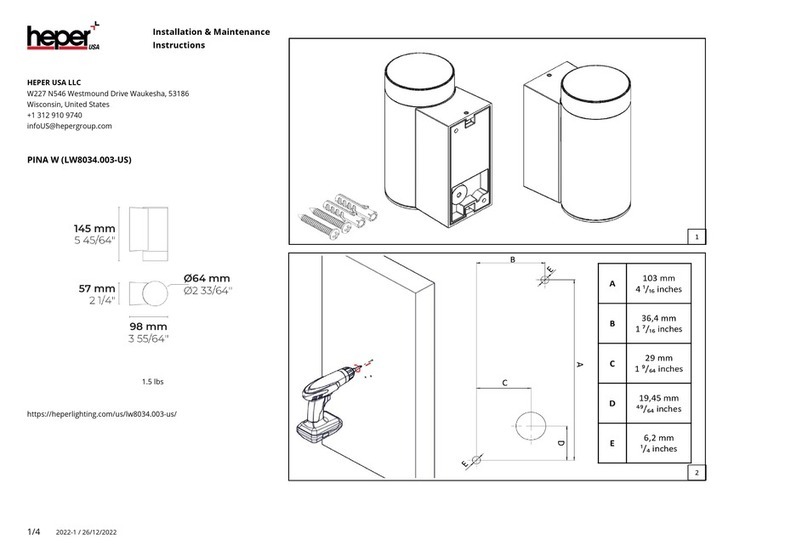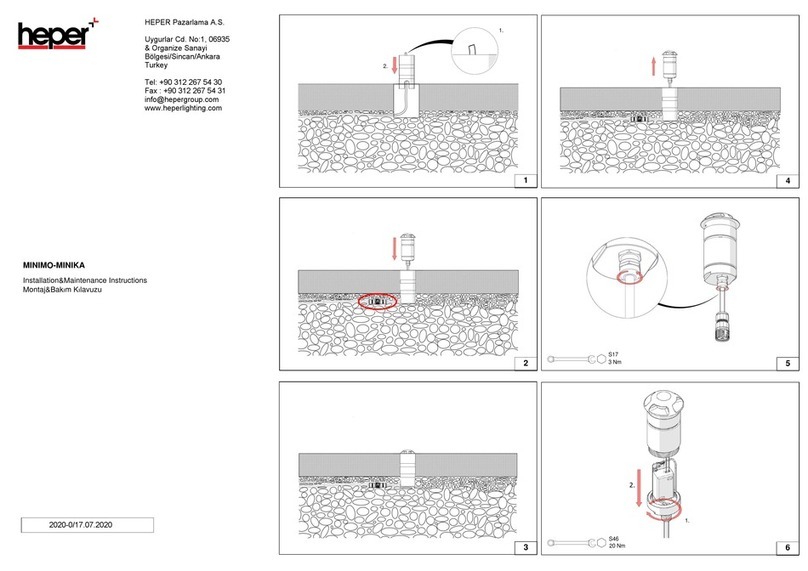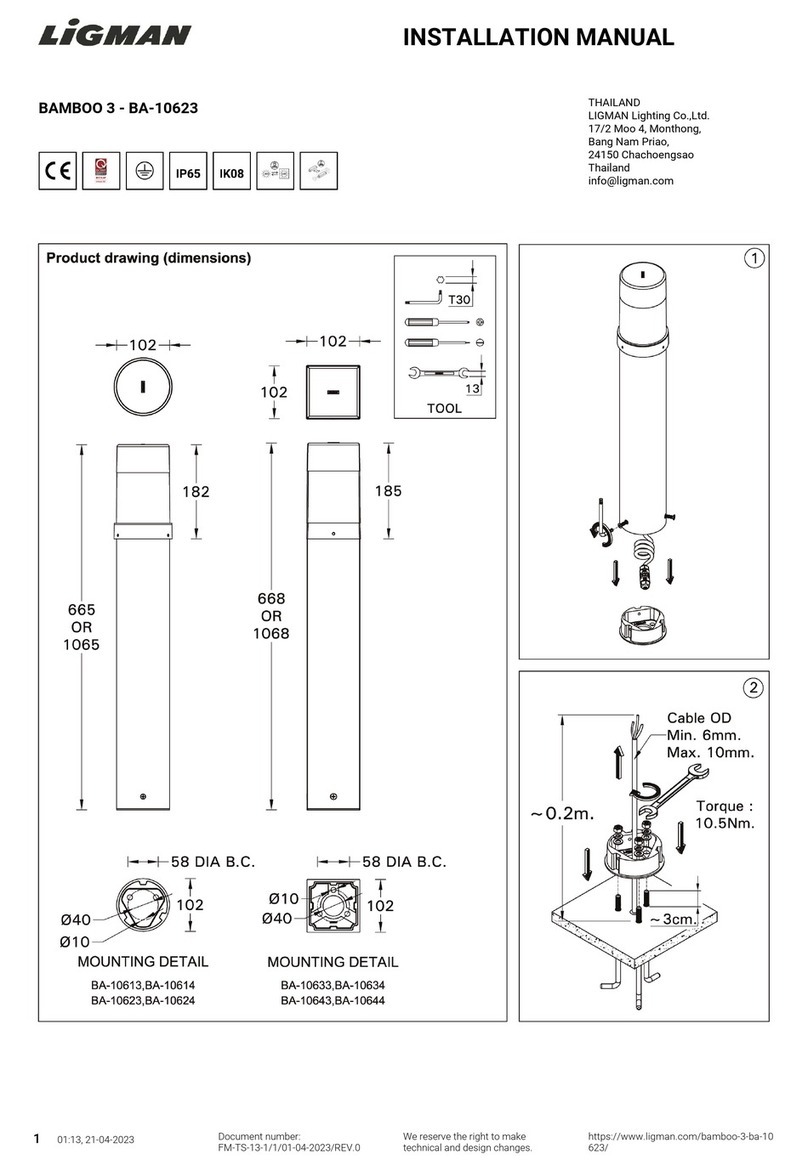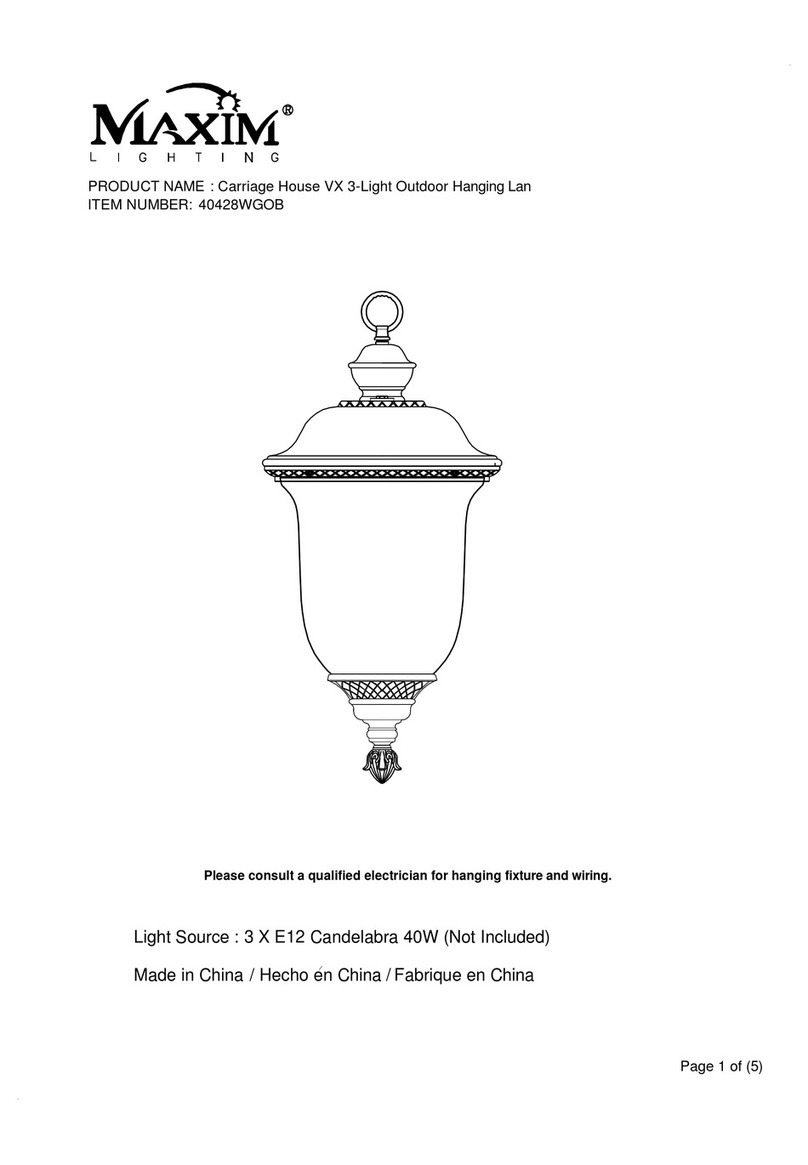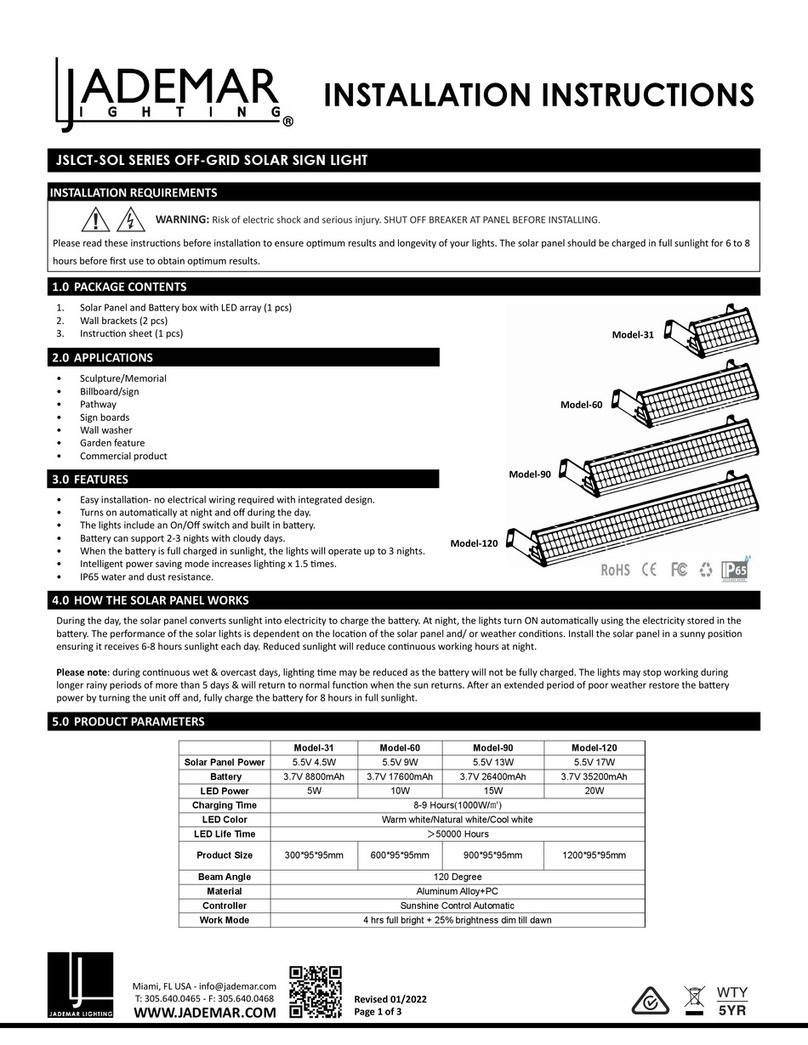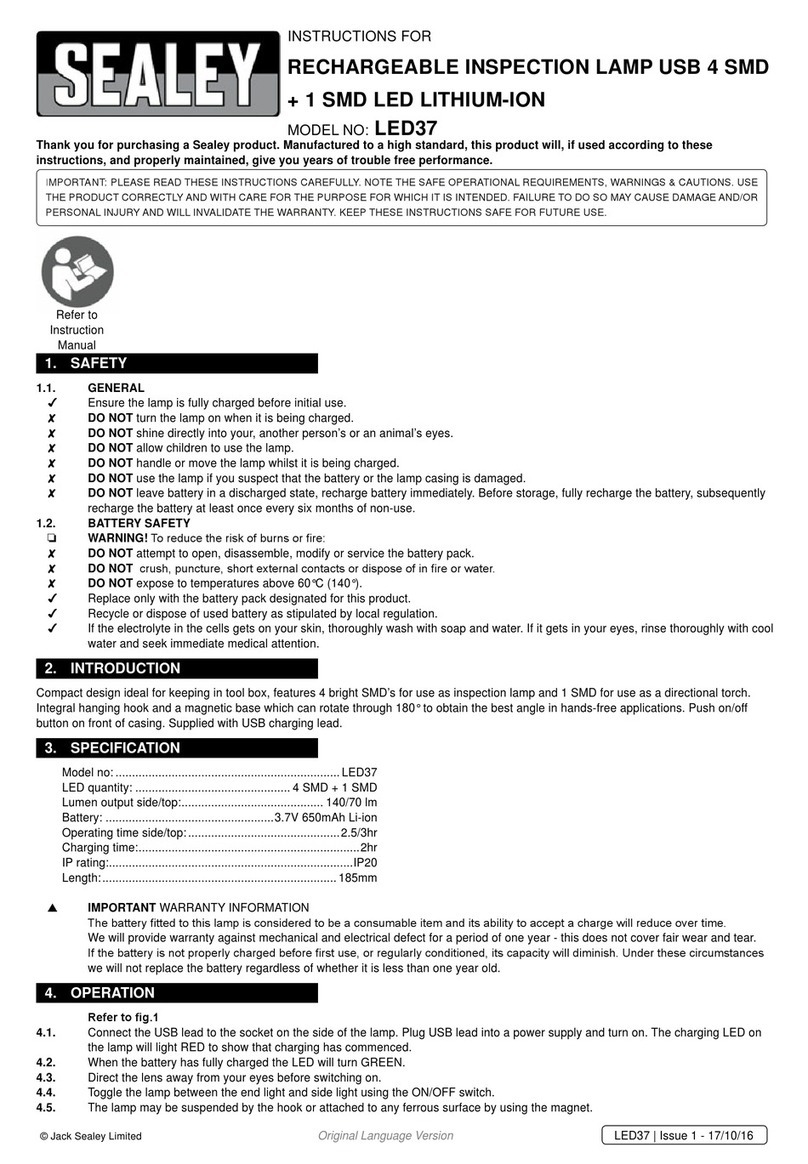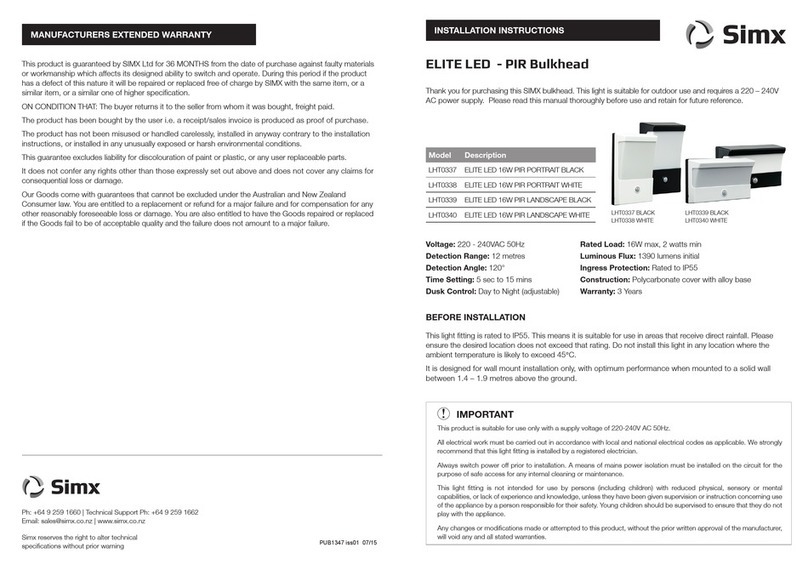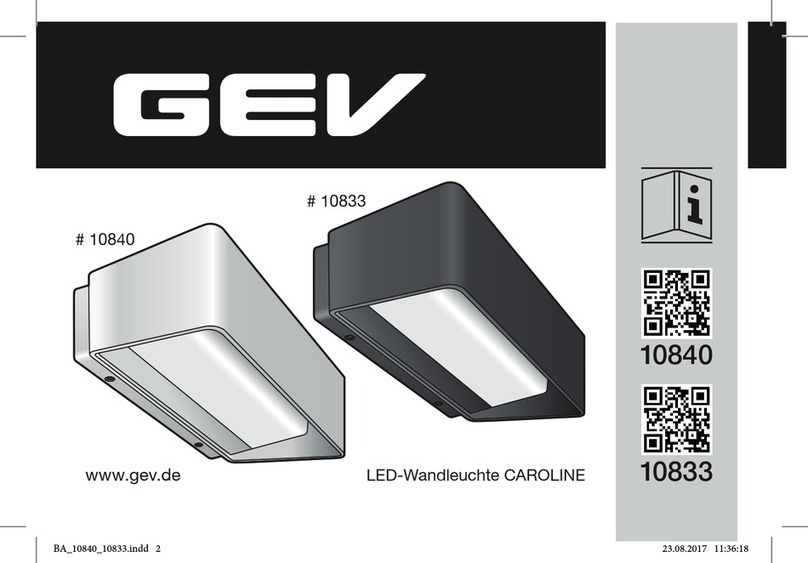
REQUIREMENTS
WARNING: Risk of electric shock and serious injury. SHUT OFF BREAKER AT PANEL BEFORE PERFORMING ANY ACTIONS.
JRL-SOL SERIES ALL-IN-ONE LED SOLAR ROADWAY LIGHT
QUESTION
WWW.JADEMAR.COM
Miami, FL USA - info@jademar.com
T: 305.640.0465 - F: 305.640.0468 Revised 09/2022
Page 1 of 2
TROUBLESHOOTING SHEET
Please read this enre manual to fully understand and safely use this product. Specificaons are subject to change without noce. Please visit our website the most recent user guide versions.
1. Maximum ambient temperature is 122°F (60°C).
2. Risk of electric shock. Ensure that main power source is when wiring or separang the secons of the product.
3. Check to make sure that all fixture connecons have been properly made and the fixture is grounded to avoid potenal electric shock.
4. Do not handle energized fixture when heads are wet, when standing on we for damp surfaces, or in water.
The customer tested the baery terminal voltage is 0V. What is the reason, how to deal with it, and how to avoid?
REASON
The baery voltage is completely out, the protecon board protects and cuts off the output.
CAUSES
a. Long me discharging without charging, out of power;
b. Long storage me of the baery with less power (shipping, transportaon, storage takes long me), resulng in self-consumpon of electricity;
c. Baery failure.
TROUBLESHOOT METHOD
1. Lamp charging acvaon: Turn on the lamp switch and place the solar panel under direct sunlight for charging. Theorecally, the indicator light will be on
during charging (except for individual models of controllers). Tesng the voltage of wire which connected controller and baery to judge whether it's charging
or not.
A. If it can be charged, the baery will be charged and acvated, and it will work normally aer being fully charged. The baery will also have voltage when
tested separately.
B. If it sll fails to work aer charging, and the baery terminal voltage is sll 0V, it means that the baery is not acvated and you need to use a charger or a
solar panel to acvate directly. Please refer to 2 for charger acvaon and 3 for direct solar panel acvaon;
2. Charger acvaon: Directly use a voltage stabilized power supply and charger with a voltage of about 14-24V to charge the two ends of the baery directly.
Aer 10 minutes, remove the charger and test the baery voltage separately. If there is a voltage, it can be used normally. If not the baery needs to be
replaced.
3. Solar panel acvaon: Disconnect the wiring of the solar panel and the controller, test the voltage and current of the solar panel in the sun, use a mulmeter
to disnguish the posive and negave poles of the baery and the solar panel. Solar panel and baery posive connect to posive and negave to negave.
Aer 10 minutes, remove the solar panel and test the baery voltage separately. If there is voltage, it means it is acvated and it can be used normally. If not,
the baery needs to be replaced.
4. Any one of the above methods can be acvated. Try 2 or more methods. If fail to be acvated, the baery is damaged and the baery needs to be replaced.
Tools used: mulmeter (for measuring voltage and current), charger or regulated power supply (within 10V higher than the baery)
Issue avoidance:
1. Baery should be charged 50% or higher before shipment.
2. User should charge and discharge it every 3 months, and then store it in full power.




